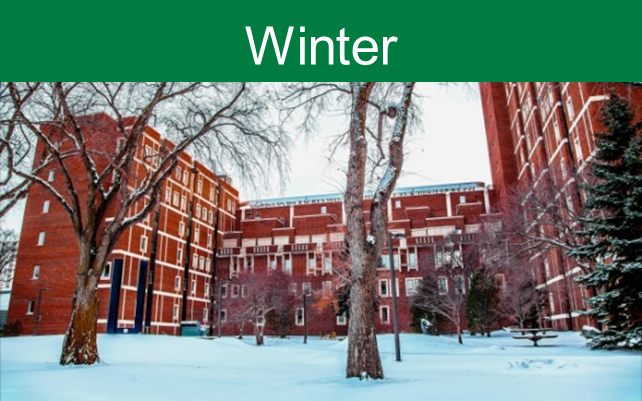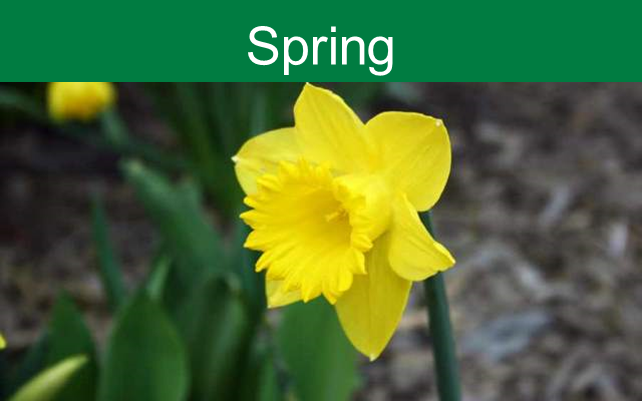Weather in Edmonton
Canada's Sunshine City: The days are short in the winter and very long in the summer (as little as 7 hours of daylight in the winter and up to 17 hours in the summer). Edmonton averages more hours of sunshine than any other major city in Canada.
Spring
The spring months (March, April, and May) are when the weather warms, and the snow melts. March will often feel wintry with cooler temperatures, but by April, snow will be melting, the days will be longer, and it will feel much warmer.
Spring days are usually clear and sunny, although there are periods of rain. There are noticeably more daylight hours as spring progresses.
Summer
Summer in Edmonton (June, July, and August) is a time of long, sunny days interspersed with afternoon thundershowers. Temperatures during the day can be as high as 35°C, although you can expect most days to range from 20°C to 30°C, with nights being cooler.
During summer, it's a good idea to wear sunscreen if you'll be outside in the sun; you could also wear light, covering clothing, along with a wide-brimmed hat.
One thing you may notice in Edmonton is mosquitoes - these annoying insects will be in wooded areas and fields (especially near lakes or ponds), and it's a good idea to use insect repellent to protect yourself.
Fall
The autumn months in Edmonton (September, October, and November), are a time of change; temperatures start to cool, and the days grow shorter. During September, there will be many days that reach to around 20°C, but by November, daily temperatures will likely hover around 0°C to 5°C.
Generally, autumn can also be a bit windier than summer and possibly a bit wetter (depending on the year).
Winter
With colder temperatures, shorter days, and a lot of snow, winter in Edmonton might be different than what you've experienced before.
Winter Temperatures
The temperature in Edmonton during the winter months can vary greatly day-to-day and even throughout an individual day. Here's what you can expect from the different temperatures:
- +5°C to -5°C: These days will be warmer than average, quite wet (as snow will melt a bit), and likely sunny. You won't see many of these days during winter, so take advantage of them and enjoy the outdoors.
- -5°C to -15°C: This range will be fairly common for winter, with many days hovering around -10°C during daylight hours. During these temperatures, it isn't too cold outside, although if you're outside for a long time, you may feel chilled.
- -15°C to -25°C: You can expect it to be about this cold at night and in the early morning before the sun rises, but these temperatures are a bit colder than average for the daytime. Wearing proper winter clothing is a must, as it's very easy to get frostbite at these temperatures.
- -25°C to -35°C: Days like these are the coldest you should encounter in Edmonton. When the temperatures dip below -30°C, you'll probably want to avoid going outside - unless you're wearing a lot of warm clothing. Being outside without proper clothing at these temperatures can be dangerous, and you'll find yourself quickly chilled.
When it's very cold...
When it's very cold out (below -20°C), you should be dressed properly if you go outdoors. It may surprise you how quickly you feel chilled after stepping outside, especially at night.
Frost Bite is when skin and body parts freeze - depending on the severity, the consequences can range from discomfort all the way to the amputation of fingers and toes. To prevent this, you should always wear gloves or mittens and a hat or toque. If you're standing still (such as waiting for a bus), try moving around a bit (wiggling your fingers and toes) to keep the blood moving around your body.
Hypothermia is a very dangerous condition that occurs when the body's internal temperature drops below a certain point. Make sure that you're always properly dressed when you're outside, especially at very low temperatures, as being outside in only a t-shirt for as little as 5 minutes at -30°C can lead to both frostbite and hypothermia.
1. Check daily weather forecasts and dress appropriately (Environment Canada: 780-468-4940). Winter temperatures can range from +5 to -35 degrees Celsius.
2. Allow extra time for both walking and public transit (buses and trains), especially after a snowfall
3. Get out during the daylight! Edmonton often has sunny winter days, but the days are short. Being outside during the daylight can help cheer you up and energize you.
4. Eat well. You will be warmer if your body has food energy to burn.
5. If your skin or lips become dry or parched from the cold and dry heat indoors, try using a moisturizing cream or lip balm available in drugstores.
6. Dry indoor heat can cause minor dehydration, which in turn may lead to colds. Drink lots of water, and try putting a container of water over your heat register to moisturize the air.
7. Wear sunscreen with an SPF of at least 15 if you're planning on being outside for long periods of time (>2 hours). Remember that you can get sunburn on a cold sunny winter day as well as in summer.
8. Even though it may be bright and sunny, the temperature can still be -20° Celsius in winter, so dress appropriately.
9. Take into consideration the wind chill factor. A cold wind can make a temperature of -10° Celsius feel like -25° Celsius or worse.
10. Be careful to avoid frostbite. This occurs when skin is exposed too long to freezing temperatures and blood circulation to that area stops. Be careful that your ears, fingers, toes and cheeks are covered, especially when there is a wind.
11. Always carry emergency supplies in your car in case you become stranded. Emergency supplies should include a blanket, a source of heat (candle and matches), non-perishable food, a shovel and a flashlight.
12. In winter, allow yourself extra time to cross the road, as cars may have difficulty stopping on icy roads.
-
Driving in winter is different than driving in other seasons. The cold temperatures, icy roads, and blowing snow can make winter a more hazardous time to drive, and it's important to be prepared. When getting ready to drive in winter, it's important to consider the following:
1. Winter Tires: You should have winter or all-season tires on your vehicle (identifiable by the snowflake mark)
2. Snow Banks/Windrows: All public roads in Canada are cleared of snow regularly. However, these snowbanks (also known as windrows) can make the roads effectively narrower, as well as making parking on the street much more difficult.
3. Block Heaters: Your vehicle should be equipped with a block heater (which will allow you to plug the vehicle in) so that the engine is able to start on cold days.
4. Get a Snow/Ice brush: Snow and ice will accumulate on your vehicle, especially if it's left outside during snowstorms. It's important to have a snow/ice brush to clean your windshield.
In many winter situations, such as during a snowstorm or if there is freezing rain, it is much safer to take public transit (a bus or subway) rather than driving, especially if you are not used to winter driving.
Changing a few things in your home can help keep you healthy and happy over the winter months:
1. The air in winter can feel fairly dry; purchasing a humidifier, or leaving a bowl of water near the heating register, can help alleviate this
2. Instead of turning up the heat, try wearing warmer clothes (such as a thick sweater); this will be more comfortable
3. Nights may be colder, so you might want an extra blanket on your bed


